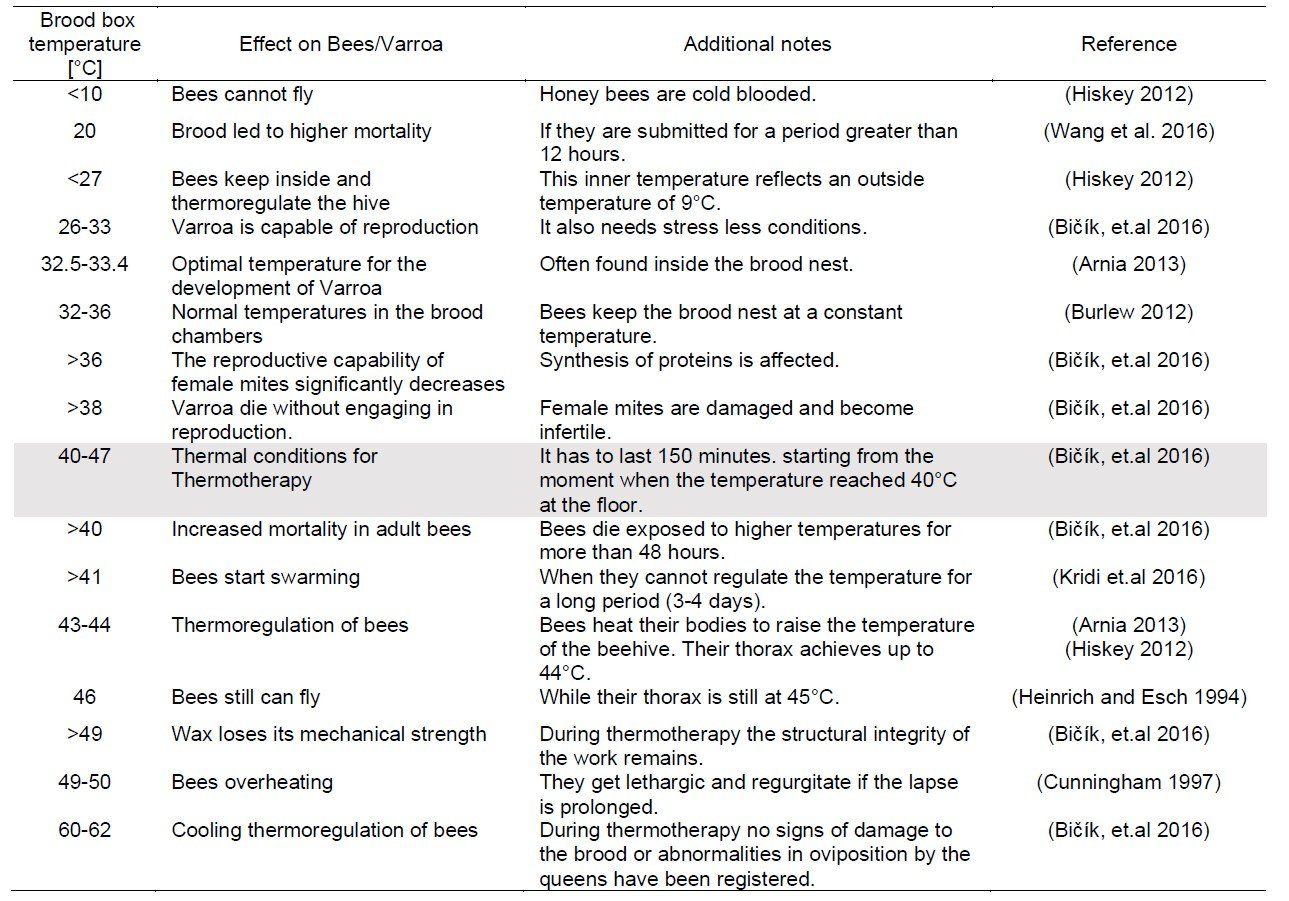What is Thermotherapy?
Thermotherapy operates on a fundamental principle: the disparity in heat tolerance between bees and Varroa mites. Bees possess a significantly higher tolerance for heat compared to Varroa mites. By gradually and carefully elevating the temperature within a hive, the Varroa mites experience stress, cease reproduction, and ultimately sustain irreversible damage leading to their demise.
In their natural habitat, the internal temperature of a beehive typically hovers around 35°C, coincidentally the ideal temperature for the growth and proliferation of Varroa mites. Bees, unknowingly, are adept at regulating the hive temperature to maintain this optimal condition, inadvertently providing a favorable environment for Varroa infestation to thrive.
The precise temperature regulation within a beehive presents a valuable opportunity for Thermotherapy. By raising the internal hive temperature slightly above 38°C for a minimum of 2 hours, the reproductive capability of Varroa mites is disrupted, leading to their thermal stress. When the temperature is increased slightly higher, just above 40°C, the mites immediately begin to perish and fall from the brood and bees.
Thermotherapy offers a stress-free solution for both beekeepers and bees. During the thermal treatment, the proteins in young mites undergo immediate and irreversible changes, causing them to suffer irreversible damage. Unlike chemical treatments, Varroa mites are unable to develop resistance to heat treatments. Moreover, the bee colony, wax, and honey remain unaffected, as thermotherapy does not leave behind any residual chemicals. It completely eliminates the need for acids and other chemical agents, making it a safe and environmentally friendly alternative.
The table presented below provides a comprehensive overview of temperature conditions and their impact on bees and Varroa. As depicted in the table, bees are highly capable of withstanding temperatures up to a maximum of 50°C, allowing for the safe implementation of thermotherapy within the temperature range of 38°C to 45°C. This specific temperature range is ideal for eradicating Varroa while minimizing any excessive strain on the bees and brood.

Thermotherapy Studies / Research:
Thermotherapy has been a well-researched and accepted concept for over 40 years. However, its widespread adoption has been hindered by the reliance on traditional electrical heating methods. This requirement has posed challenges in terms of on-site power availability, either due to the absence of mains electricity or the high costs associated with battery storage.
Here are several file downloads containing studies and articles conducted independently in recent decades, focusing on Thermotherapy and its proven effectiveness in combating Varroa. Please feel free to download and explore these resources.
History of
Thermotherapy
Thermotherapy Using PCM's
Thermotherapy Article from 2000
Thermotherapy Article from 2016
Thermotherapy Article from 2019
Thermotherapy Article from 2020
Thermotherapy Testimonials:
In Germany, 'Thermotherapy' has gained widespread acceptance and practical application as an effective method for managing Varroa mites. It is considered the most efficient and successful approach, with demonstrated benefits including enhanced colony health, increased honey production, and improved survival rates during winter. To provide comprehensive guidance on Thermotherapy, a comprehensive 'Thermotherapy Handbook' has been published collaboratively by renowned German beekeepers and experts.
Below is the link to download the complete 'Thermotherapy Handbook':
Thermotherapy Handbook:
Guide & Testimonials
40+
years of research
Unlimited
application potential
Simple
application method
